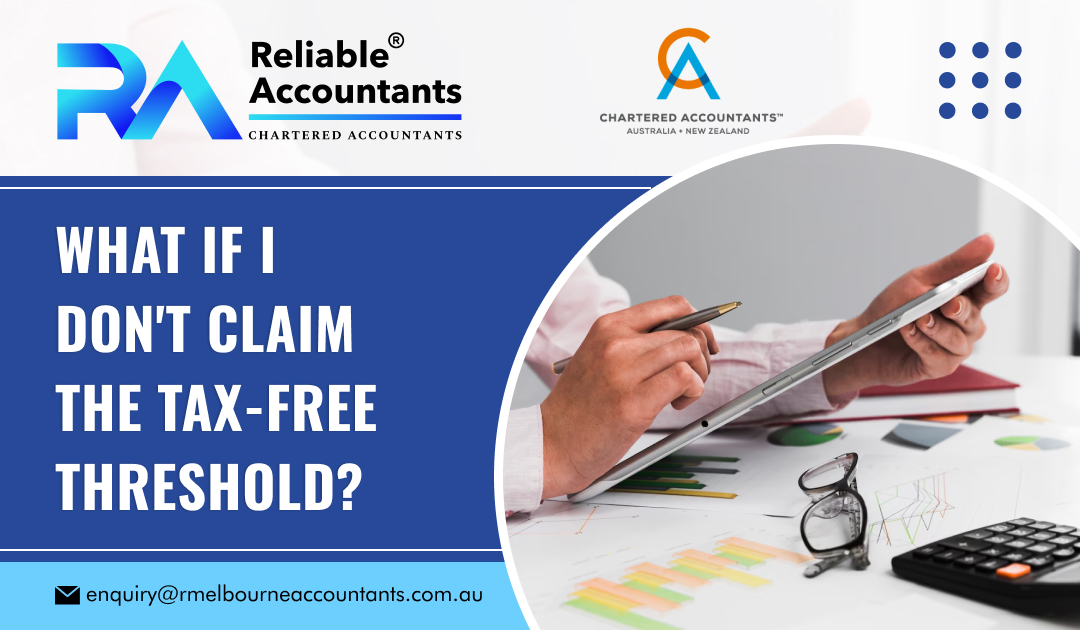Do you know the advantages of claiming the tax-free threshold as an employee? Are you still looking for what the tax-free threshold exactly is? If you are an Australian resident for tax purposes for a full year, you don’t need to pay tax on the first $18,200 of your income. This is known as the tax-free threshold. Remember, this is not as easy as you might think, especially when you do more than one job or earn from other sources. In fact, it is essential to understand the tax-free threshold to get more out of your tax return. Let’s have a closer look at what exactly the tax-free threshold is, what if you don’t claim it and how it can affect your income tax.
What is the Tax-Free Threshold in Australia?
The tax-free threshold is the maximum income you make in a year without paying income tax. If you make above the tax-free amount, there are tax rates that show how much income tax you need to pay. Due to Australia’s progressive tax scheme, you more you earn, the more income tax you need to pay.
If you are an Australian resident and lodge your taxes in 2024, the first $18,200 of your income is considered tax-free. You don’t need to pay taxes if you make less than $18,200. Basically, you need to pay tax on the amount above $18,200. To understand easily, the tax-free amount of $18,200 is:
- $350 a week
- $700 every two weeks
- $1,517 a month.
How Much is the Tax-Free Threshold?
As an Australian resident for tax purposes, the first $18,200 of income you receive is tax-free. If you make money less than $18,200 from all sources, you don’t need to pay tax. You will have to pay tax if you make money more than $18,200.
What If I Don’t Claim the Tax-Free Threshold?
It is crucial to file claims against the tax-free threshold within a fiscal year, failure to do so can result in being compelled to pay income tax on all your earnings. In Australia, income tax rates depend on the assumption that you use the tax-free threshold to avoid paying tax on the first $18,200 of your earned money. If you do not claim it, you may end up paying more tax than necessary during the year.
Even if you complete and submit your tax return, the ATO will grant you a refund for the amount of tax you overpaid. However, you may still have to make additional tax payments during the year. To minimise the tax deducted from your income in the future, you can fill out a PAYG withholding modification application form, as per the Australian Taxation Office (ATO).
Should I Claim a Tax-Free Threshold?
The short answer is ‘Yes’. If you claim the tax-free threshold, you don’t need to pay tax on the first $18,200 you earn during the fiscal year. On the other hand, if you don’t claim a tax-free threshold, you will have to pay more income tax.
When to Claim Tax-Free Threshold?
When you start a new job, your employers will ask you to fill out a tax file number declaration form. To claim the tax-free threshold, you need to answer ‘yes’ to question 9 – ‘Do you want to claim the tax-free threshold from this payer?’ The same goes for if you are on Centrelink payments. Usually, employees answer ‘yes’ to claim the tax-free threshold, unless they are doing more than one job.
Income Tax Rates and Threshold Changes
On January 25th 2024, the government announced new changes to the individual income tax rates and thresholds that will come into effect on July 1st, 2024. These changes have been passed into law.
Starting July 1st 2024, the proposed tax cuts will:
- Reduce the 19% tax rate to 16%
- Reduce the 32.5% tax rate to 30%
- Increase the threshold above which the 37% tax rate applies to $135,000 from $120,000
- Increase the threshold above which the 45% tax rate applies to $190,000 from $180,000.
Conclusion
The blog shares information on tax-free thresholds along with a few frequently asked questions. If you are confused about whether you should claim a tax-free threshold or not, you can ask Reliable Melbourne Accountants.
More Useful Links:
Tax Agent Melbourne
Small Business Accountants Melbourne

